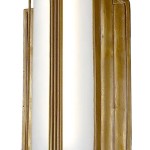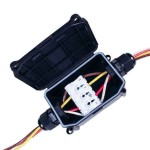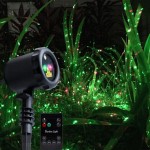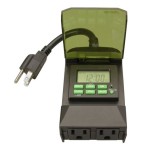Best Light For Outdoor Photography: A Guide to Capturing Stunning Images
Outdoor photography offers a vast array of subjects and dynamic lighting conditions. Understanding the interplay of light and shadow is crucial for achieving captivating and impactful images. Mastering the best time of day for shooting and leveraging various lighting scenarios can elevate your outdoor photography to new heights. This article delves into the optimal lighting conditions for capturing stunning outdoor photographs, providing insights into golden hour, blue hour, and other favorable lighting scenarios.
Golden Hour: The Magic of Warmth and Softness
Golden hour, the period shortly after sunrise and before sunset, is widely regarded as the most flattering time for outdoor photography. This transitional phase features soft, warm light that creates a magical ambiance. The low angle of the sun casts long shadows, adding depth and dimension to landscapes and portraits. The warm hues of golden hour create a romantic and nostalgic feel, perfect for capturing breathtaking sunsets, intimate portraits, and evocative landscapes.
Golden hour offers several advantages for photographers:
- Soft, Diffused Light: The sun's rays are filtered through the atmosphere, resulting in a soft, diffused light that minimizes harsh shadows and highlights. This creates a flattering and balanced illumination for subjects.
- Warm Color Palette: Golden hour light carries a warm, golden hue that adds a touch of magic to the scene. This warm tone enhances colors and creates a sense of nostalgia and tranquility.
- Long Shadows: The low angle of the sun casts long shadows, adding depth and dimension to landscapes and portraits. These shadows can create unique and interesting compositional elements.
Blue Hour: The Enchantment of Twilight
Blue hour, the period just after sunset or before sunrise, is another magical time for photography. During this transition, the sky takes on a deep blue hue, often accompanied by a vibrant orange or pink glow on the horizon. Blue hour offers a unique and mystical ambiance, ideal for capturing atmospheric landscapes, cityscapes, and moody portraits.
Blue hour photography provides distinct advantages:
- Dramatic Color Palette: The deep blue of the sky combined with vibrant hues on the horizon creates a dramatic and captivating color palette. This unique color combination adds depth and visual interest to photographs.
- Enhanced Detail: The soft, blue light of blue hour can highlight details in the scene that might be lost in the harsh light of midday. This allows for a more nuanced and intricate depiction of your subject.
- Eerie and Atmospheric: The soft, blue light creates an eerie and atmospheric mood, perfect for capturing scenes that evoke a sense of mystery or tranquility.
Overcast Skies: Diffused Light for Even Illumination
While sunny days offer vibrant colors and dramatic contrasts, overcast skies can be a photographer's best friend. The cloud cover acts as a natural diffuser, softening the light and minimizing harsh shadows. This even illumination is particularly beneficial for portraits, landscapes, and macro photography. Overcast days provide a balanced and flattering light that reveals details and textures without the distractions of harsh shadows or blown-out highlights.
The benefits of overcast skies for photography include:
- Even Lighting: The diffused light from overcast skies illuminates the scene evenly, minimizing harsh shadows and highlights. This creates a balanced exposure that reveals details and textures.
- Soft and Flattering: The soft, diffused light is incredibly flattering for portraits, as it minimizes wrinkles and imperfections, creating a smooth and natural appearance.
- Enhanced Colors: While overcast skies might seem dull, they can actually enhance colors, as the diffused light reveals the subtle nuances of color tones.
Backlighting: Dramatic Silhouettes and Golden Glows
Backlighting, where the sun is positioned behind your subject, creates dramatic and evocative photographs. Backlighting can result in silhouettes, where the subject appears as a dark shape against a bright background, or a halo effect, where the subject is surrounded by a golden glow. Backlighting is particularly effective for portraits, landscapes, and architectural photography, adding a touch of drama and intrigue to your images.
Utilizing backlighting effectively in photography offers several benefits:
- Silhouettes: Backlighting can create striking silhouettes, emphasizing the subject's outline and shape against a bright background. Silhouettes are a powerful way to convey mood and emotion.
- Golden Glows: Backlighting can also create a halo effect around your subject, making them appear to glow. This is a dramatic and romantic effect that can add a sense of mystery and wonder to your photographs.
- Depth and Dimension: Backlighting can add depth and dimension to your photographs by highlighting the relationship between your subject and the background.
Understanding Light Direction and Quality
Beyond specific times of day, understanding the direction and quality of light is crucial for achieving impactful photographs. The direction of light affects the shadows cast and the overall mood of the image. For example, side lighting creates dramatic shadows and highlights detail, while front lighting provides even illumination, ideal for portraits.
The quality of light refers to its hardness or softness. Hard light, typically found on a bright, sunny day, creates sharp shadows and high contrast. Soft light, found on overcast days or during golden hour, creates gentle shadows and low contrast. The choice between hard and soft light depends on the desired effect and subject matter.
By understanding the principles of light direction and quality, photographers can strategically position themselves and their subjects to achieve the desired effect.

The Best Lighting For Outdoor Photography Focus

Off Flash Vs Natural Light Which Is Best For Outdoor Portraits Shutterbug

11 Outdoor Portrait Photography Tips For Easy Shots

Best Light For Outdoor Photo Sessions Tips Tricks Showit Blog

Best Flash For Outdoor Photography Guns Vs Mono Heads

Tips On How To Find Good Natural Lighting Vs Bad Light In Outdoor Portrait Photography For Beginners

11 Outdoor Portrait Photography Tips For Easy Shots

The 3 Best Smart Outdoor Lights For Backyards Of 2024 Reviews By Wirecutter

How To Use Off Flash For Portraits Outdoor Photography

Off Flash Vs Natural Light Which Is Best For Outdoor Portraits Shutterbug
Related Posts







